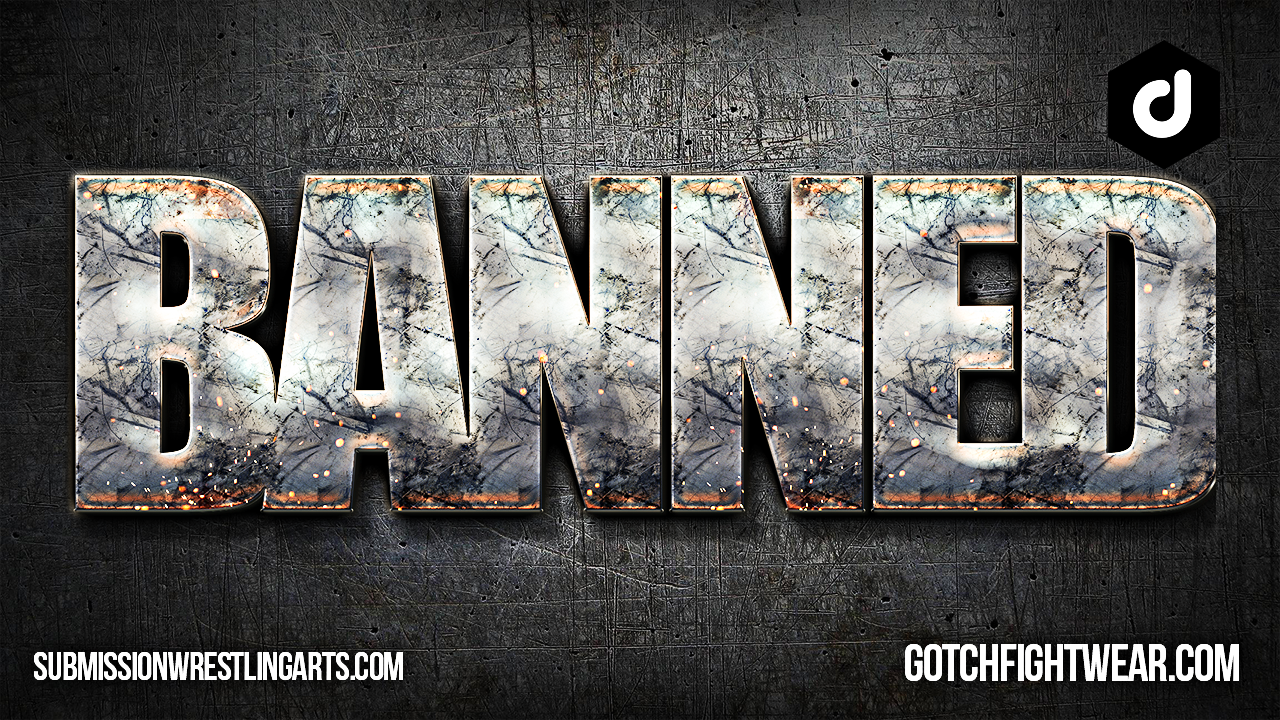Author: Luis Ciraiz.
Strangles are some of the most effective submission holds in combat, and at one point in history they were also the most controversial.
…BANNED… The truth about chokes in Catch Wrestling.
Strangles were Alex Swanson’s favorite holds, Farmer Burns and Tom Jenkins obviously knew how to use them, Frank Gotch won his first match by strangle and Evan Lewis brought their effectiveness to fame, building much of his career around them and later passing his knowledge to Fred Beell who became a choking wizard himself.
However, during a period of time “the strangle” was not allowed in most catch wrestling competitions. This was of course not always the case as stated in this article:
“Brutality is sternly represented today. Practically any hold or method of procedure was allowed in the days of old. Men might strangle or snap the limbs of an adversary, provided they had an opportunity of doing so. But in a modern match the strangle hold is not allowed, neither is the full Nelson, or the hang, and many referees even refuse to allow the “arm across the mouth” hold”
So What does history tell us about the barring of strangle holds?
All the way until 1892 the use of strangles in Catch as Catch Can competitions appeared to be common practice, but some events took place that year that illustrate an ever growing public perception of chokes being dangerous.
Saturday February 27. During a wrestling match in Bradford, Pennsylvania, Dennis Gallagher defeated William Gibbs via strangle causing him to pass out. He was not regaining consciousness which raised concern among the audience. The news stated:
“The hope was expressed that the matter would prove less serious than reported, and that Gibbs was out only for a short time. Gallagher’s own experience with the strangle hold is not yet forgotten. In a match with Evan Lewis at Turn Hall, Dennis was choked until Superintendent Morin stepped on the stage and stopped the bout to prevent his death.”
Later that year, Lewis who spent most of the 1880’s winning by choke, disputed a historic match against Greco-Roman world champion Ernest Roeber. Lewis reputation prompted Police Captain W. J. Barrett to show up and bar the strangle.
By 1,893 the controversial hold was still generally allowed as this news article states:
“In Catch-As-Catch-Can Wrestling all sorts of tricks, including the strangle lock are allowed”.
Even though this continued to be the norm for a some years, the word “strangle” was often accompanied by adjectives like “deadly”, or “dangerous”, and it was not uncommon to see it being barred on agreement.
This inconsistency ignited controversies with competitors making excuses when losing by strangle and disagreements about the rules…
1898… A news article describes how Jake Snyder protested the inclusion of the strangle in his Catch Wrestling Match against Frank Gehle, the article states:
“In accordance to Catch As Catch Can Rules, no agreement having been made to bar this hold or the falls referred to they all go”.
Just to give you some time perspective, at this point in history Frank Gotch was a decade away from facing George Hackenschmidt for the first time, and the competitive prime of the Snake Pit’s founder Billy Riley was 30 years into the future.
The controversy surrounding handicap matches was stirred up with the grappling community reacting to it:
“Every wrestler should study it in order to avoid being drawn into it in a competition in which the practice is permissible.” 1903 article.
“Only Amateur Wrestlers bar the strangle hold”. George Burlingame. 1904.
“In all the championship matches held in London in the last few years they never think of barring the strangle hold, or any other hold. Thinking about barring the strangle is merely a suggestion to protect wrestlers without nerve or with an undeveloped neck.” Charles Ross. 1906
Ernest Roeber, in favor of the ban also made his case:
Wrestling as conducted today is nothing short of brutal. You might as well hit a man on the head with a hammer as to permit toe holds and strangles.
How can anyone call this sort of thing wrestling? where is the science in it? Any man under the catch as catch can style as it is portrayed on the mat today can obtain a fall. The strangle hold will choke a man to death if held long enough. Roeber said.
The dispute was far from over as referees were calling fouls any time an arm came near the neck, or failing to call the fouls based on their own criteria. Jaw locks and neck cranks were being confused with strangles. And of course there are many different kinds of strangles.
As this 1910 article states:
“Possibly the greatest bone of contention in wrestling is the strangle hold. Nearly every mat artist has his own idea of what really constitutes a strangle, and from the divergent views of men actively engaged in the game it is almost a hopeless task to arrive at a solution.”
By 1918 the strangle was generally barred, but the Handicap impossed on the sport with its abolition didn’t stop there.
This 1917 article accurately describes the issue: “That it is a cruel hold is beyond dispute, but it is ridiculous to assume that it is the only cruel one employed by the mat artists.
And just like that, it began… the same people who banned chokes were now coming after HeadLocks, for quote “the pressure put upon the ears, temples, eyes, nose and mouth”. The next targets were Head Scissors… Body Scissor… Toe Holds… and Hammerlocks.
The ultimate goal was to get rid of all submissions falls and leave the pin fall as the only way to win. So… Catch Wrestling without submissions… ring any bells?
World War 1 had ended, and the 1920 Olympic Games in Antwerp, Belgium were just around the corner. This event would mark the first time the Olympic flag was raised in an Olympic Stadium and the Olympic Oath was voiced. Catch Wrestling was expected to be included in the list of events, but as it was the case in 1904 and 1908, its submission-free version: Freestyle Wrestling was the choice. The advocates of the ban finally had in Freestyle Wrestling what they ambitioned, but convinced they were saving lives, they were determined to reform both Amateur and Professional Catch Wrestling competition.
Even though Catch Wrestling was shifting away from it’s roots and those brutal holds that marked the early days of wrestling, many Catch Wrestlers continued to exercise their right to embrace the meaning of Catch As Catch Can, which in the words of writer Richard L. Cary Jr. is just what the name implies. The following years brought some of the most exciting No Holds Barred matches in history, specially when it came to clashes of the styles.
History continues to be written. It’s up to us to decide what the next stage in Catch Wrestling’s evolution will bring.
This video was produced by Didos and The World Submission Wrestling Federation.
Join the World Submission Wrestling Federation.

